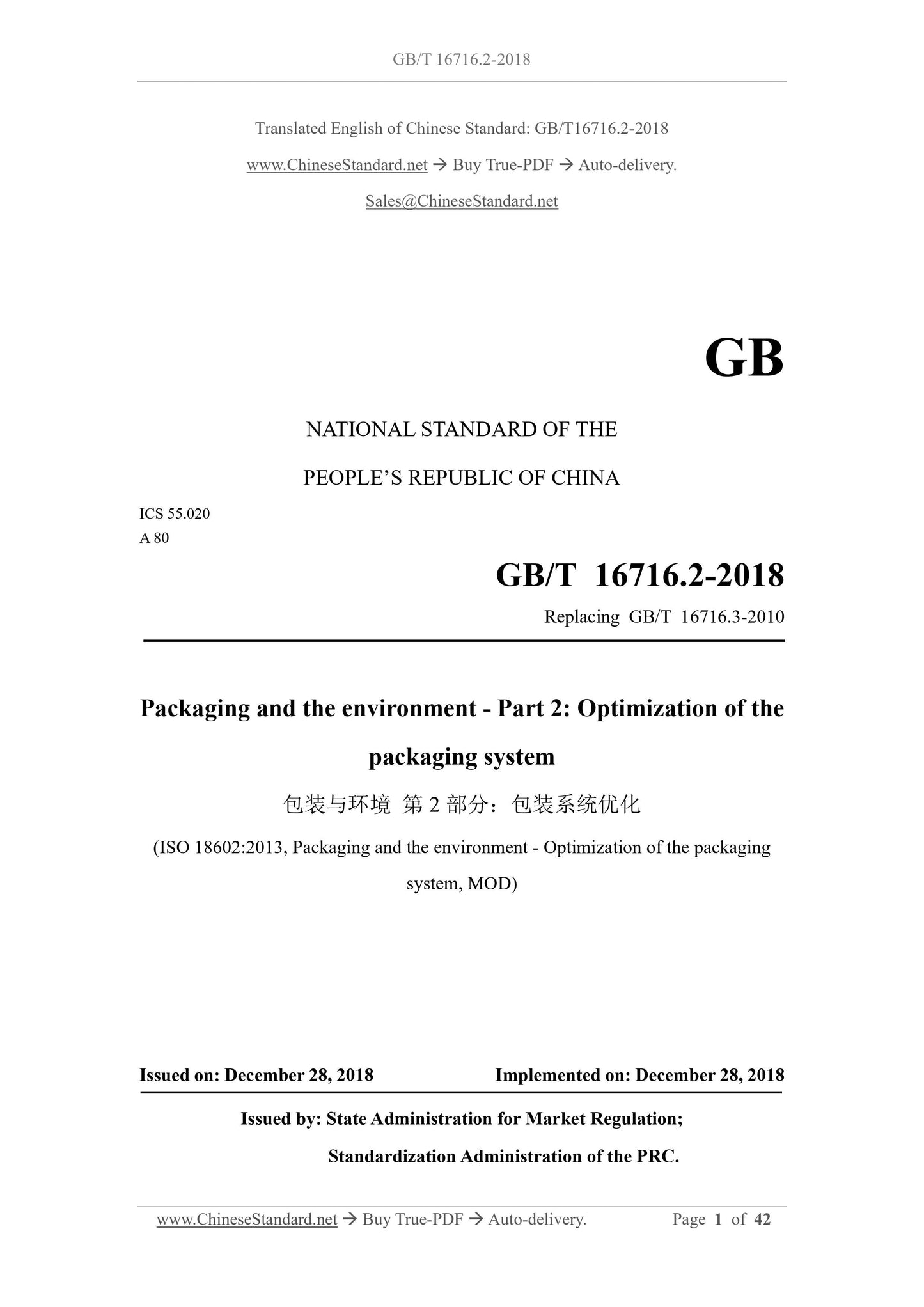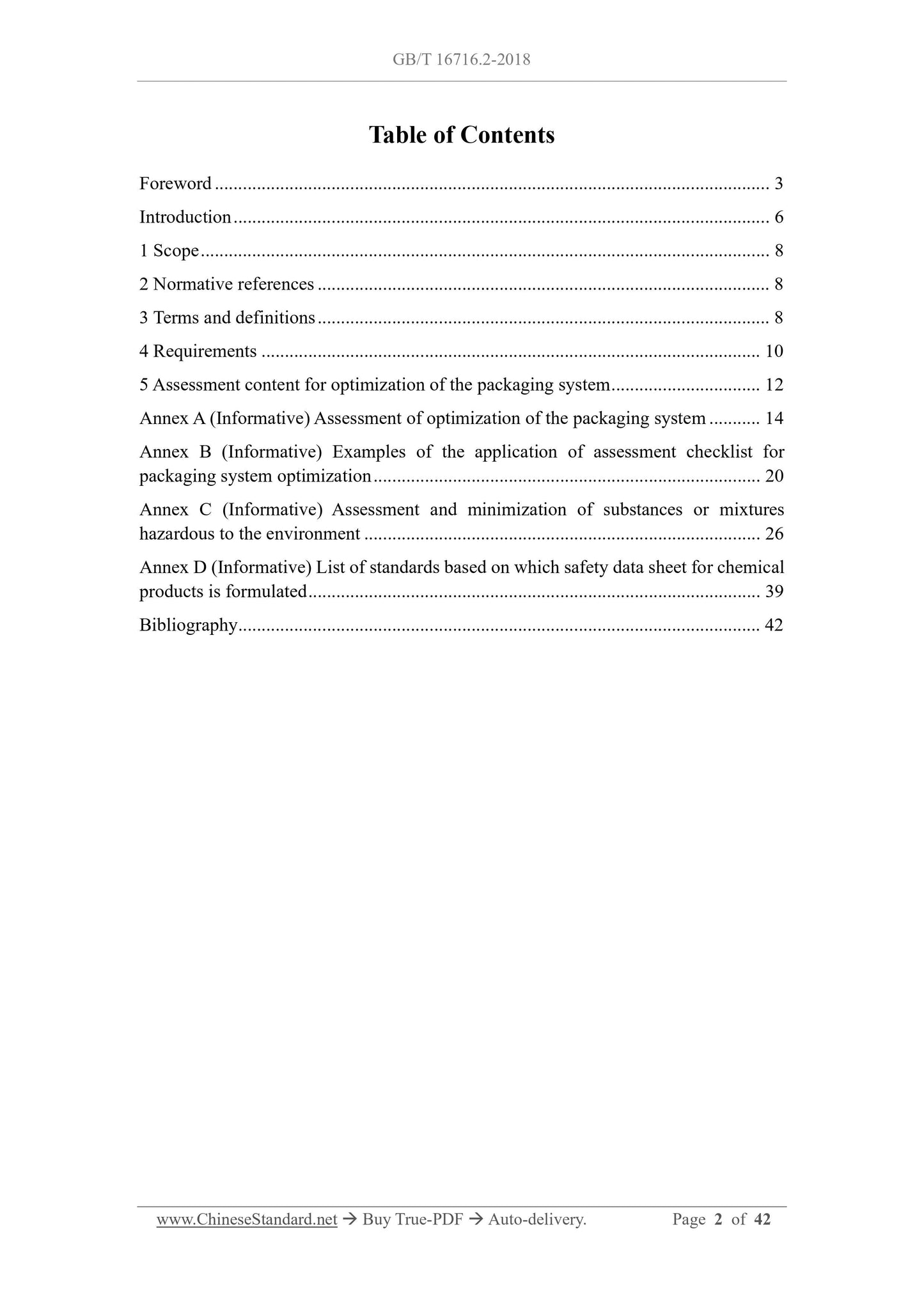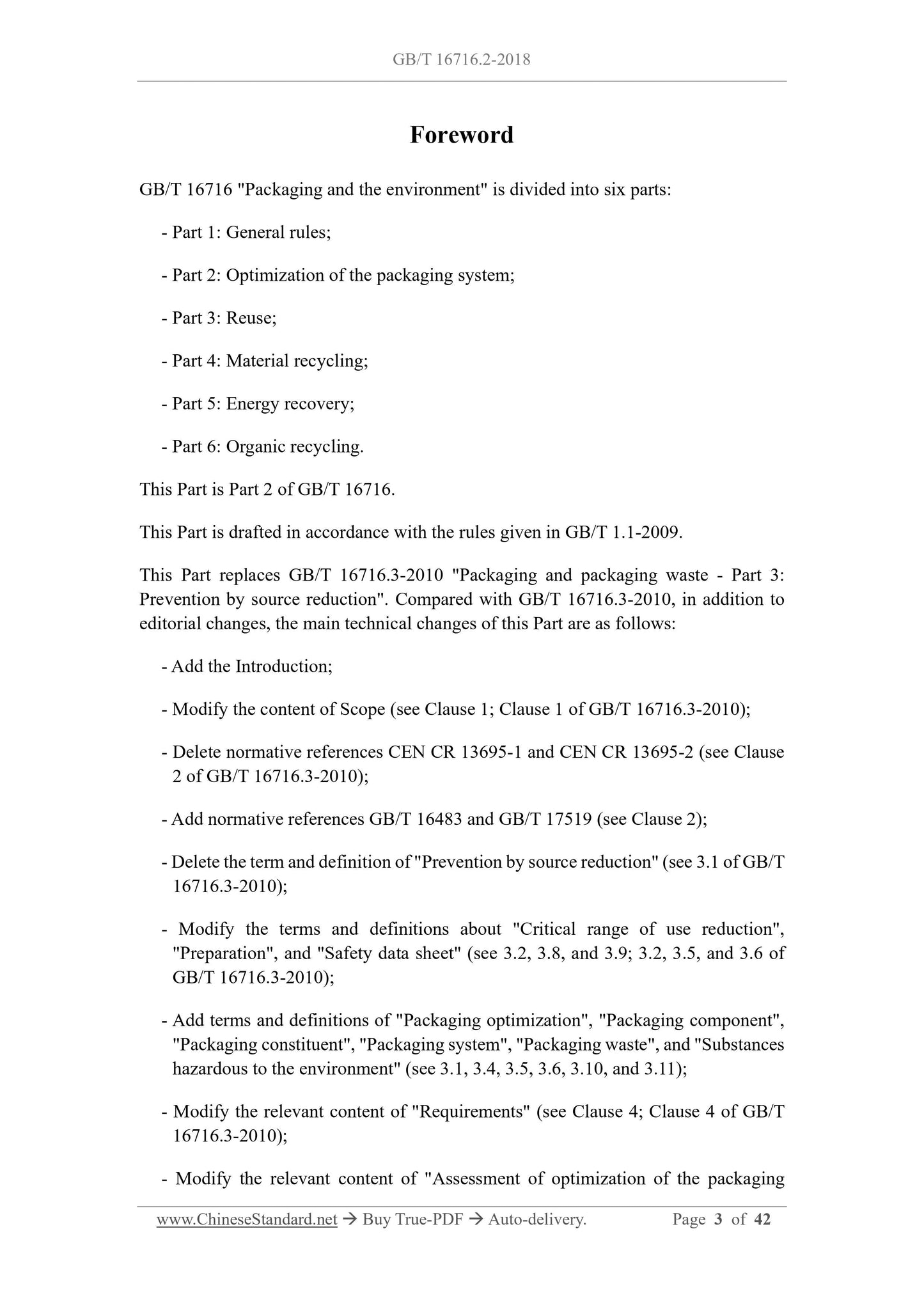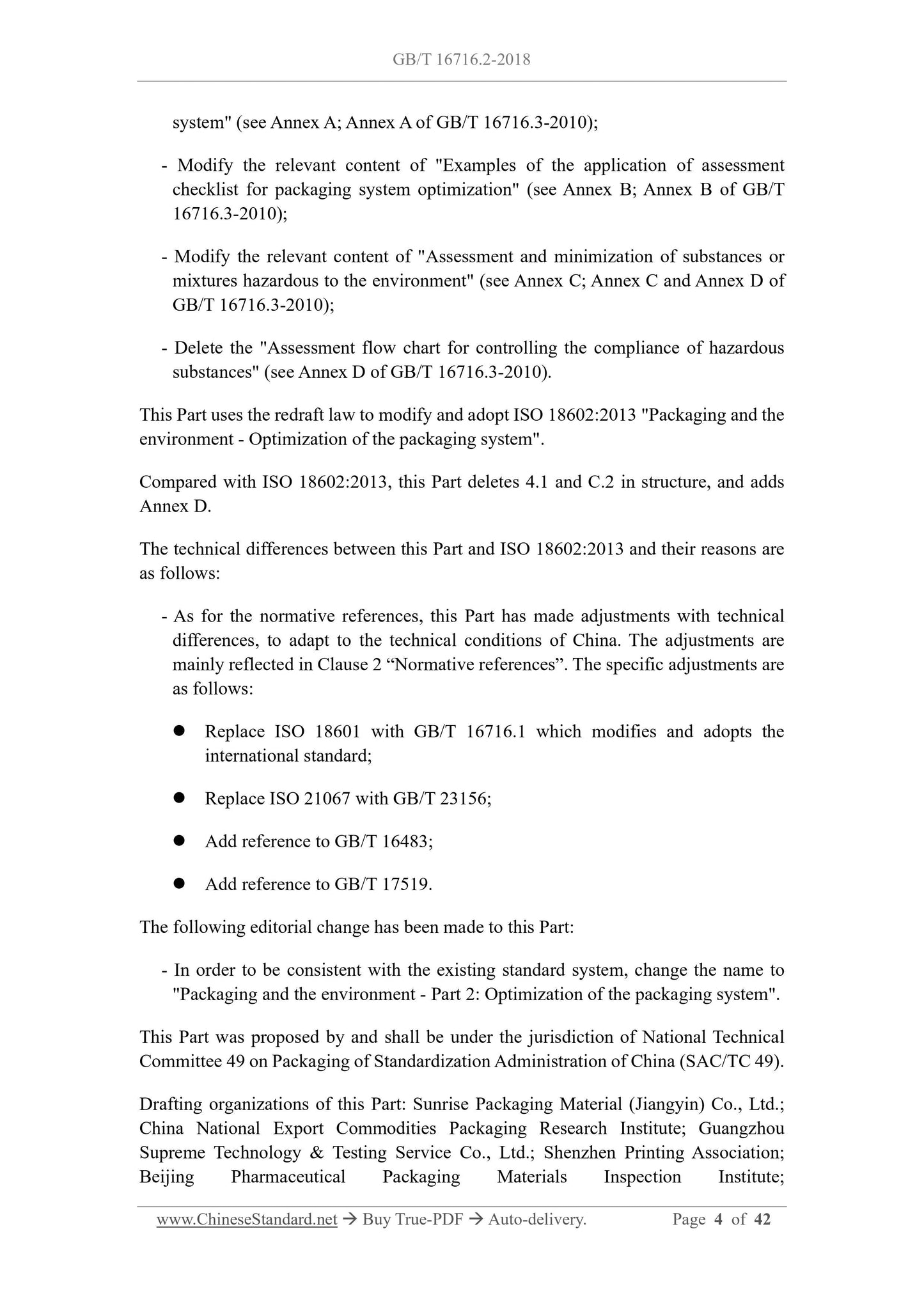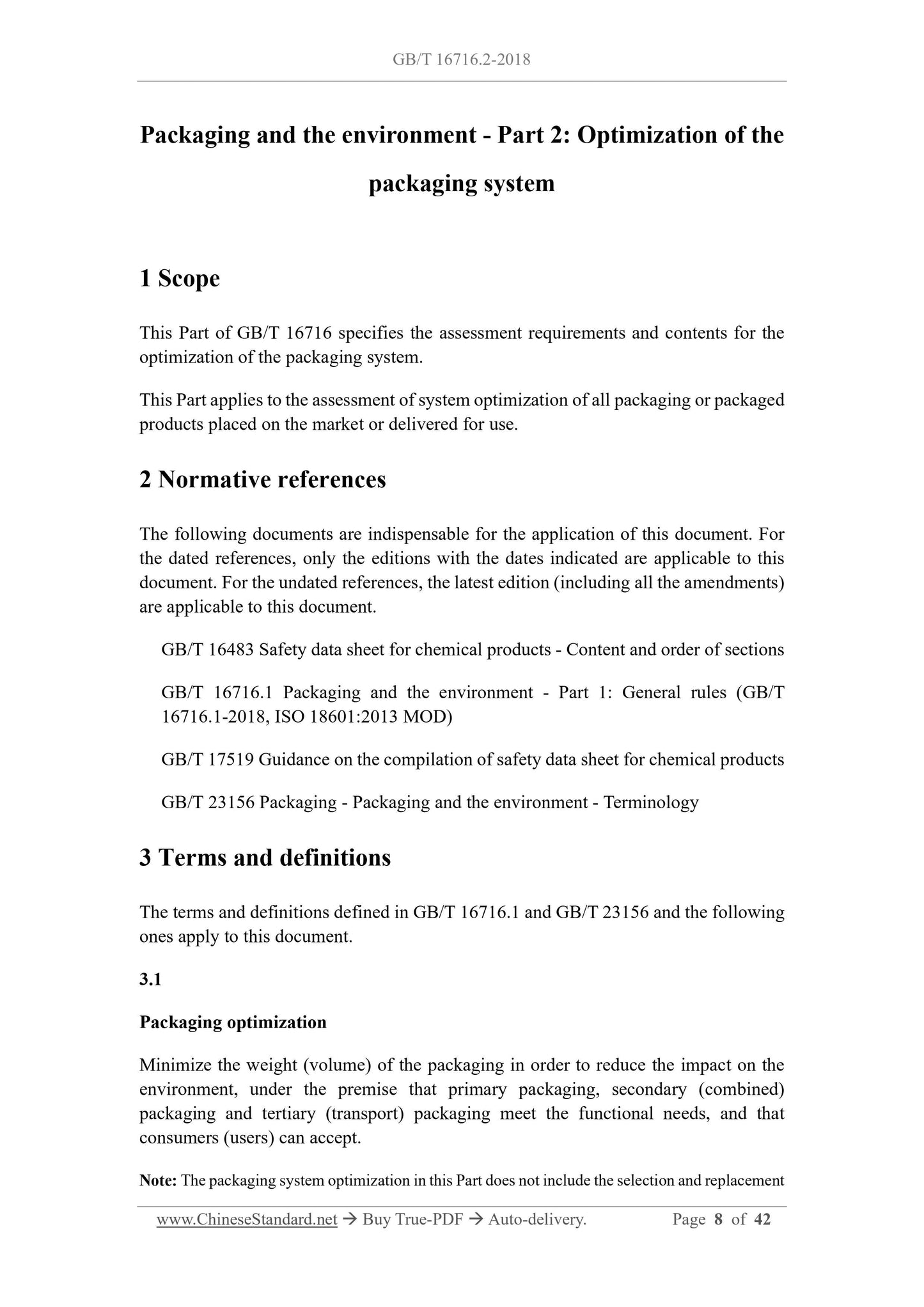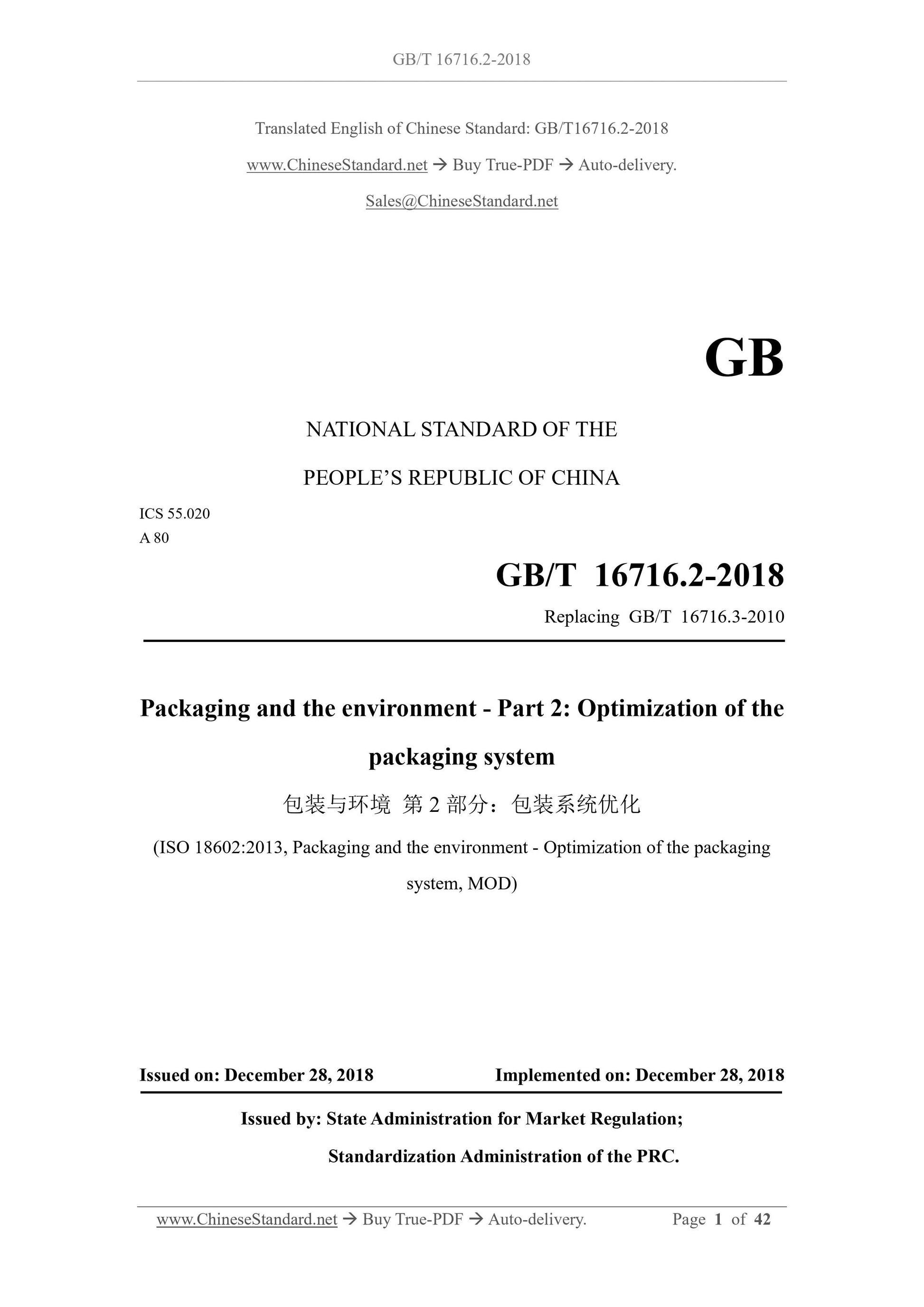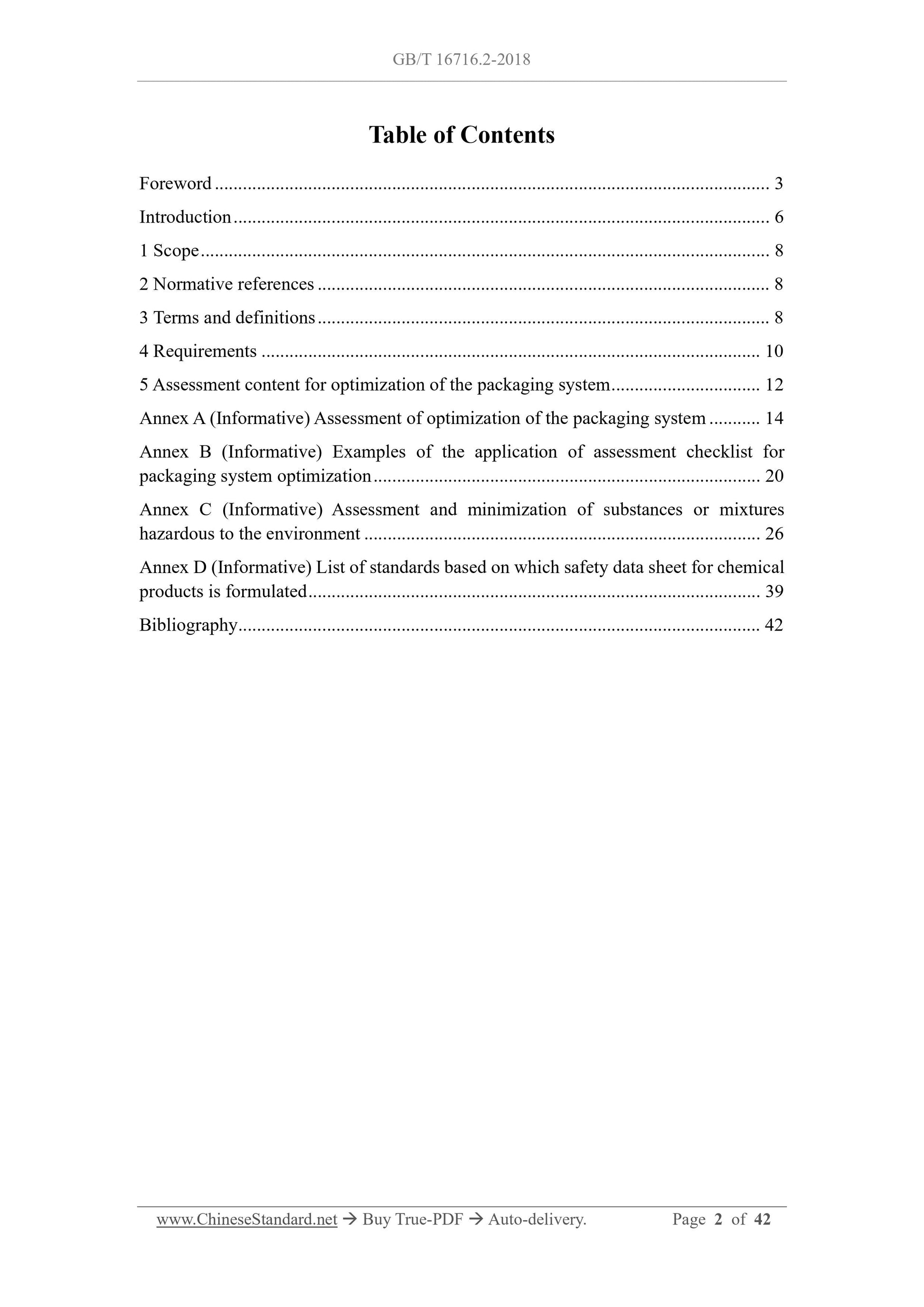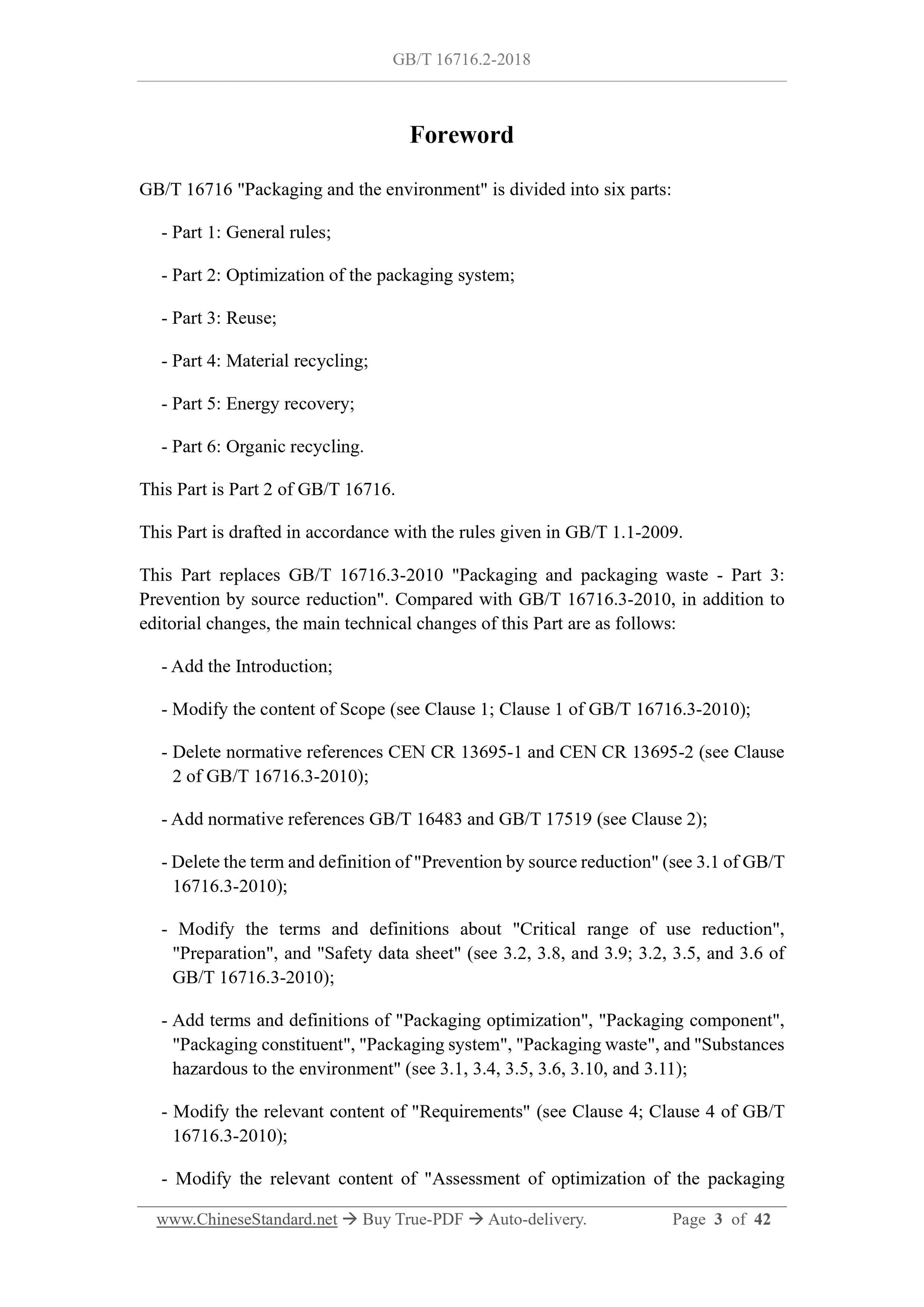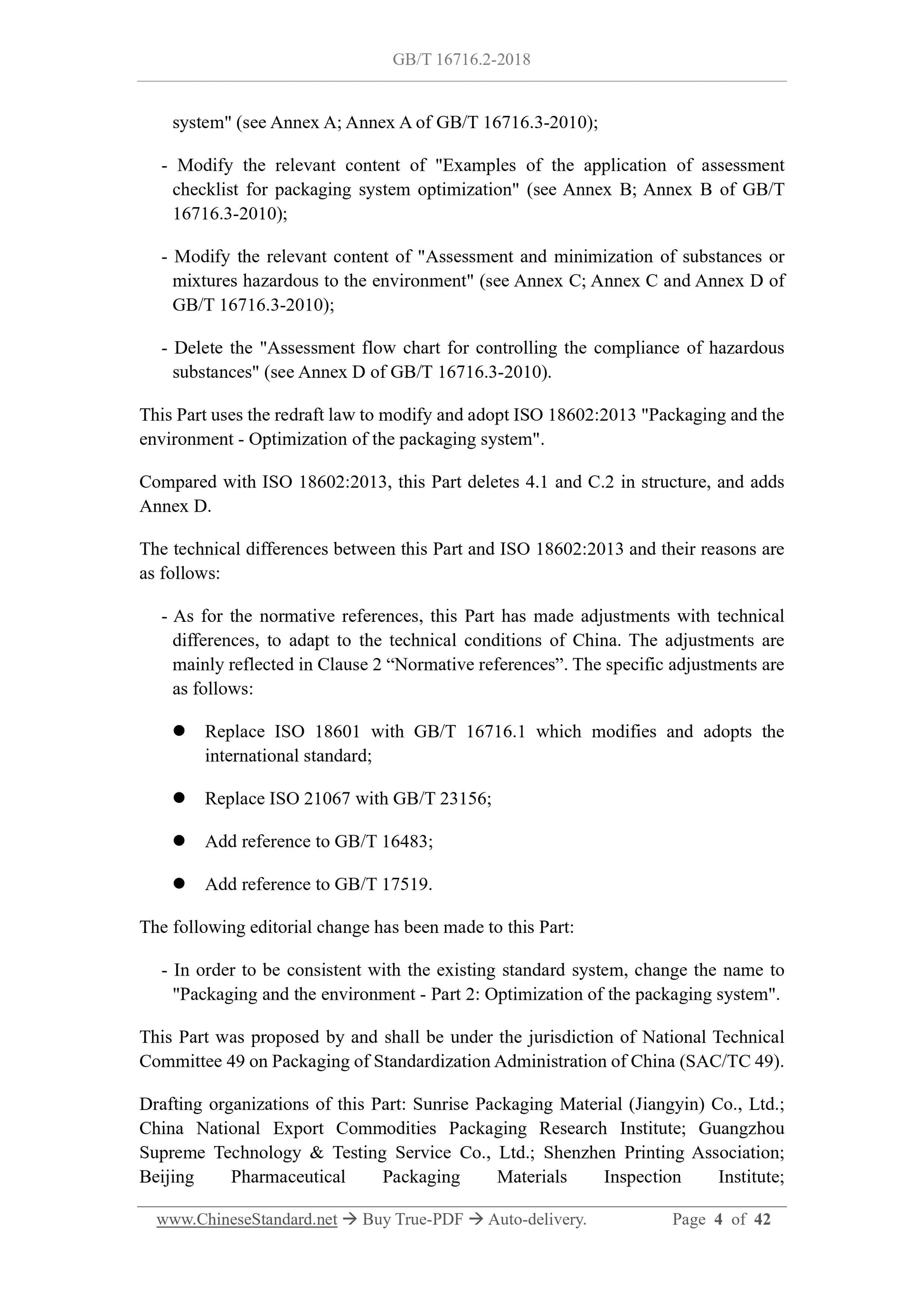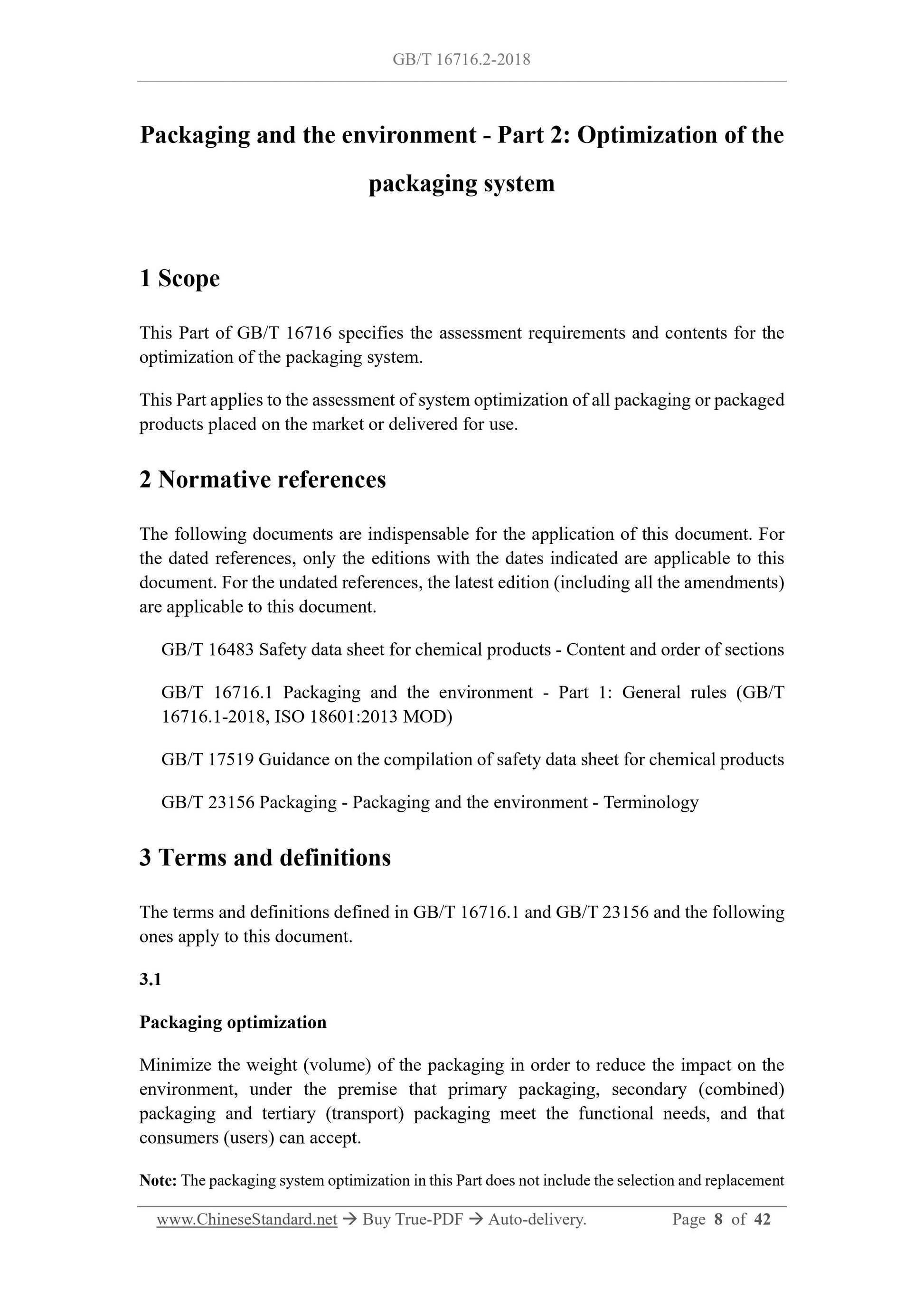1
/
of
5
www.ChineseStandard.us -- Field Test Asia Pte. Ltd.
GB/T 16716.2-2018 English PDF (GB/T16716.2-2018)
GB/T 16716.2-2018 English PDF (GB/T16716.2-2018)
Regular price
$170.00
Regular price
Sale price
$170.00
Unit price
/
per
Shipping calculated at checkout.
Couldn't load pickup availability
GB/T 16716.2-2018: Packaging and the environment -- Part 2: Optimization of the packaging system
Delivery: 9 seconds. Download (and Email) true-PDF + Invoice.Get Quotation: Click GB/T 16716.2-2018 (Self-service in 1-minute)
Newer / historical versions: GB/T 16716.2-2018
Preview True-PDF
Scope
This Part of GB/T 16716 specifies the assessment requirements and contents for theoptimization of the packaging system.
Basic Data
| Standard ID | GB/T 16716.2-2018 (GB/T16716.2-2018) |
| Description (Translated English) | Packaging and the environment -- Part 2: Optimization of the packaging system |
| Sector / Industry | National Standard (Recommended) |
| Classification of Chinese Standard | A80 |
| Classification of International Standard | 55.020 |
| Word Count Estimation | 26,285 |
| Date of Issue | 2018-12-28 |
| Date of Implementation | 2018-12-28 |
| Older Standard (superseded by this standard) | GB/T 16716.3-2010 |
| Issuing agency(ies) | State Administration for Market Regulation, China National Standardization Administration |
Share
